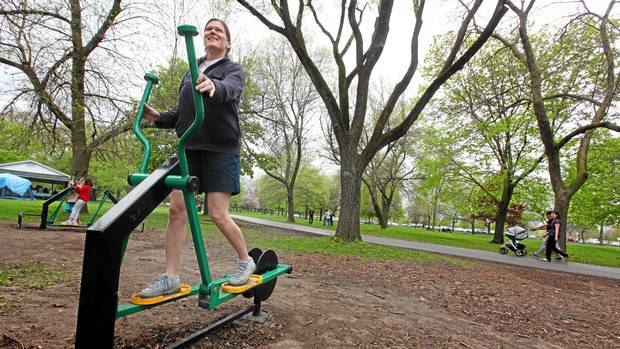Ankle injuries are very common. They do not just happen to athletes. Your muscles and joints in your foot and ankle go through a lot in daily life. All parts of the feet and ankles such as the bones, joints, ligaments, and tendons, all work together to help your mobility, stability, giving you the strength to run, jump and move. Strength and stability of your ankles is important for daily functionality, whether you are exercising or not. Weak ankles can cause other trouble in other joints of your body.
Causes Of Weak Ankles
Causes of weak ankles can happen for many reasons. One cause is a previous injury or trauma. Injuries to ankles can be things such as sprains, strains, fractures, or dislocation. Another cause of weak ankles is chronic ankle instability. Which is a condition that usually occurs after another injury such as a sprain. Posterior tibial tendon dysfunction is also known as adult acquired flat foot. This condition can cause symptoms like pain in your foot or ankle when walking, inward rolling of your ankle, flattening of your foot, or turning outward of the foot and toes. Osteoarthritis is weakening of your bones, which can cause the bones in your ankle to become weak and prone to injury. Wearing incorrect footwear that is either too narrow, too wide, too long, too short, or doesn’t have enough support can also lead to you having weak ankles. Diabetes can cause trouble with circulation to your feet, which can lead to you having weak ankles or poor stability.
Symptoms Of Weak Ankles
Symptoms of weak ankles can be sore ankles or feet. Frequent sprains or injuries to your feet or ankles. Ankle twisting outward when walking can also be a sign of weak ankles. Another is if you have trouble keeping your ankles straight when wearing high heeled shoes. If you suffer from balance problems you might also suffer from weak ankles.
Treatment Options
There are lots of remedies you can do to help alleviate your ankle or foot pain caused by weak ankles. You can take over the counter pain medication, or over the counter anti-inflammatory medications to help reduce swelling and pain in your ankles. Following the RICE treatment, which is rest, ice, compression, elevation can help alleviate pain and symptoms. Wearing proper footwear is important. If you are looking to run, make sure you get running shoes, if you need more heel support, find shoes that have heel cushioning. Braces or ankle supports can also be purchased at many stores to help give you extra support when needed. In severe injuries or cases where ankle weakness will not get better on its own, surgery may need to be a treatment option. If you have a severe fracture you may need surgery followed by your ankle and foot to be in a cast.
Exercises To Improve Ankle Strength
There are many exercises you can do that can help strengthen, stretch, and stabilize your ankles. Having strong ankles can help you prevent other injuries, as well as lower your risk of ankle injury. Rolling your ankle can be very painful and living with a painful ankle can throw off how you walk and your ability to get around. Learning ways to help strengthen your ankles can help you prevent and avoid some of these injuries.
One exercise you can do once a day with each ankle is to write the alphabet with your foot. You can do this either lying down or standing holding on to something sturdy to help with balance. You then flex your foot as you write the letters with your toes.
Another exercise is to do calf raises. This can be done while standing with your heels off of a stair, or sturdy raised platform, or exercise step. You stand on the stair with your toes on the stair, and your heels hanging off. Then push yourself up onto your tip toes as high as you can, then slowly lower yourself back down till your heels are lower than the stair to really stretch out your calf.
Another calf exercise that is useful is to lay on the ground. Keeping your legs straight, wrap a towel under the bottom part of your foot, flex your ankle to be at a 90 degree angle to your leg. Then slowly pull the towel towards you to feel the stretch in your calf.
An exercise to help with mobility of your ankle is to have you lie down on your back. Move your ankle to the point where your arch is pointing towards the ceiling. You are pulling your toes back to try to touch them to your shin. Hold this for a minute at a time. The reverse of this exercise is to point your toes away from your body, flattering your foot down as far as you can go.
One leg stands can help stabilize your ankle as well as help with your overall balance. Start with just regular one leg stands. As your stabilization, and strength of your ankle grows you can add in other aspects to make this exercise more difficult. You can add in raising your other leg up, where your knee is to the level of your hips. Then you can rotate the knee to the side of the body. Another way to increase this exercise is to stand on something that is unbalanced.
Weak ankles can cause sprains, strains, and even shin splints. Finding exercises to help strengthen, stretch, and stabilize your ankles can help prevent injury.
Weak ankles? Simple Calf Raises Can Help! #HealthSurgeon
Sources:
https://health.clevelandclinic.org/ankle-exercises-weak-ankles
https://www.orthovirginia.com/blog/foot-and-ankle-exercises-for-athletes/
https://www.foothouston.com/6-proven-exercises-for-building-strong-feet-and-ankles/
https://www.menshealth.com/fitness/a26412541/ankle-strengthening-exercises/
https://www.healthline.com/health/weak-ankles#seeking-medical-help









